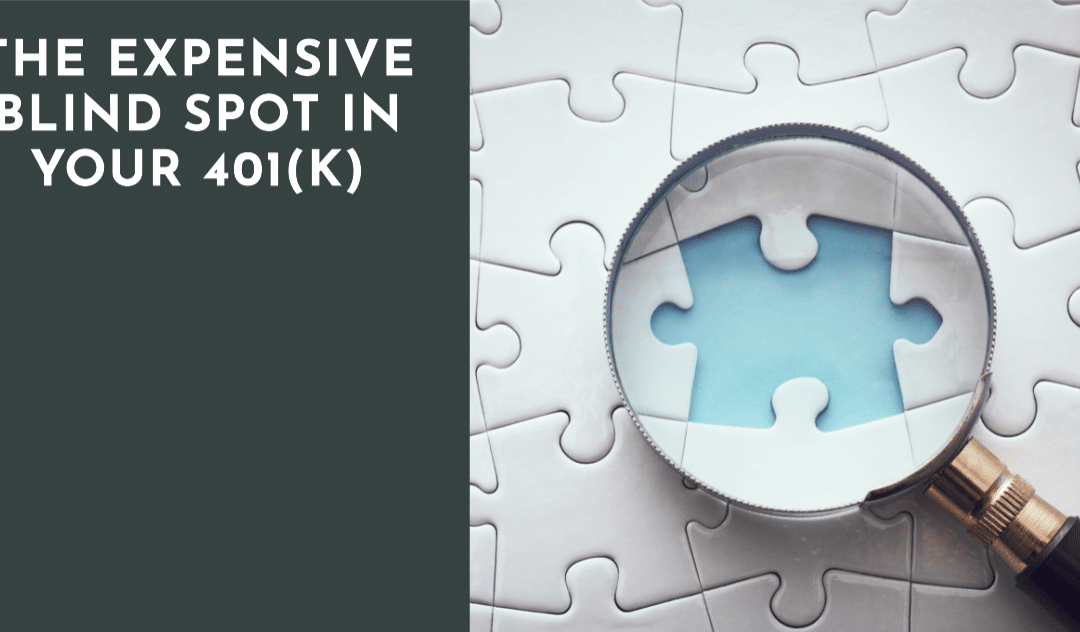Life is full of blind spots. Both personal and professional. With family and friends. In good times and tough times.
There is a blind spot in your 401(k) for sure. I can make that statement with confidence. I have been finding 401(k) blind spots for investment advice clients since 1999.
Your 401(k) blind spot falls into two categories. First, you are not aware of the investment performance ranking of your default 401(k) mutual funds.
You do not own the best mutual funds available to you. You sacrifice at the altar of “diversification.” You own five or six mutual funds in your 401(k). Instead of the two of three best mutual funds.
Second, you do not pay enough attention to the annual costs of owning your 401(k) mutual funds. The popular target date mutual funds are a perfect example. The most expensive and worst-performing mutual funds available to you.
There may be a much better 401(k) option. If you are interested in better investment performance and lower annual expenses.
Several of my 401(k) advice clients use a SDBA (self-directed brokerage account) option. This account allows for investments in ETF’s (exchanged-trade funds).
Do you know if the SDBA option is available in your company 401(k)? At a least your attention to this article can provide the answer to that question.
If you do not know, call human resources. Or Fidelity or Schwab. But find out. If you want to save a whole bunch of money over your working career in 401(k) fees. And very likely have a larger retirement account balance.
Now, back to annual investment performance and annual fees. The combination of those two elements is the blind spot in your 401(k). And it costs you tens of thousands of dollars of lost investment performance. And higher annual costs.
I pointed out your 401(k) blind spots. Do not dismiss my message here because I was the first person to bring this issue to your attention.
There is a simple solution to this problem. The solution involves finding a fiduciary investment advisor. Unaffiliated with your company 401(k) retirement plan.
When it comes to your 401(k), you have a blind spot. The best thing to do is to acknowledge that fact. And find a fiduciary level 401(k) advisor who can help you fix the problem.
The final step is to listen to the feedback you get from your investment advisor of choice. And calculate the “cost of the problem” of your 401(k) blind spot.
In the investment advice business, it is illegal for me to make guarantees. But I can tell you it is worth your time to get an investment performance ranking of your default 401(k) mutual funds. And how much it costs you each year to own those mutual funds.
The combination of those two elements will put a dollar value on the cost of your 401(k) blind spot. And you will be shocked at the amount.
Ric Lager
Lager & Company, Inc.
There is no need to continue to guess with your 401(k) mutual funds. All you need is a second opinion. You deserve it.
Reach out to me on LinkedIn. Or comment below.
Or sign up to receive a well-crafted 401(k) advice newsletter. Delivered to your LinkedIn news feed once a week.
Sign-up here.

